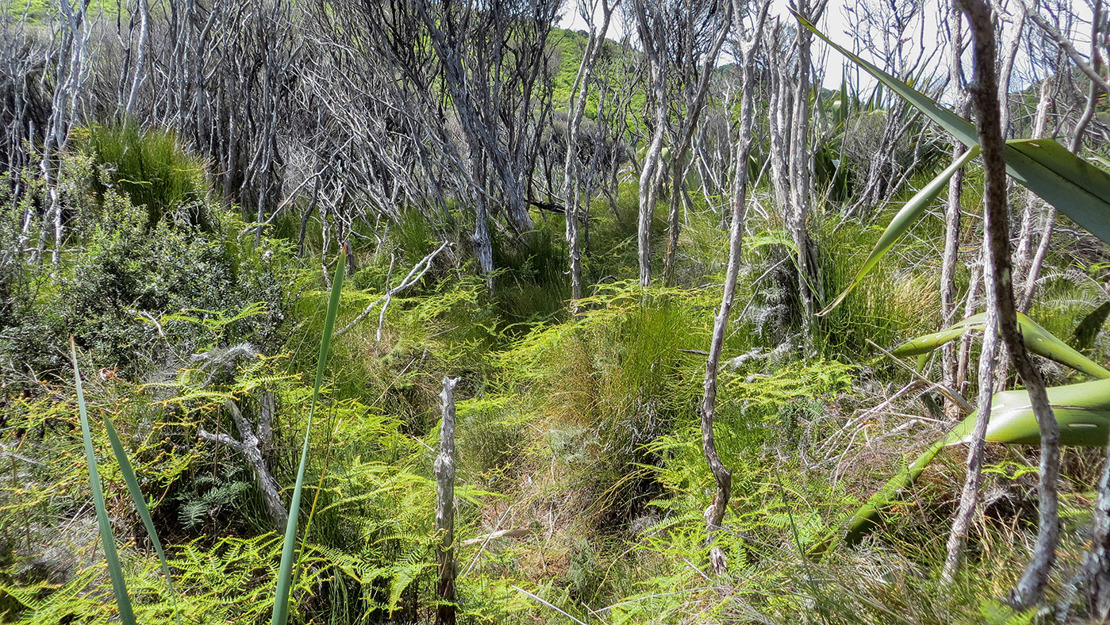Mānuka, greater wire rush, restiad rushland (WL2)
Wetland ecosystem
About this ecosystem
This ecosystem occurs in northern, warm and sub-humid areas in wetlands aged between 1500-1700 years old. Soils are organic and the water table fluctuates but the wetlands are generally saturated for most of the year.
In Auckland, only a small number of this wetland ecosystem examples remain. They are found along the margins of some dune lakes in the Te Ārai.

Flora and fauna of this ecosystem
This ecosystem is a species-poor scrub / restiad rushland. It has a canopy of mānuka and a dense sub-canopy of greater wire rush and tangle fern.
Native fauna that might be present include:
- mātātā (fernbird)
- piwakawaka (fantail)
- geckos.
Microsoft.CSharp.RuntimeBinder.RuntimeBinderException: 'Newtonsoft.Json.Linq.JValue' does not contain a definition for 'macroAlias' at CallSite.Target(Closure, CallSite, Object) at System.Dynamic.UpdateDelegates.UpdateAndExecute1[T0,TRet](CallSite site, T0 arg0) at CallSite.Target(Closure, CallSite, Object) at AspNetCore.Views_Partials_grid_editors_macro.ExecuteAsync() at Microsoft.AspNetCore.Mvc.Razor.RazorView.RenderPageCoreAsync(IRazorPage page, ViewContext context) at Microsoft.AspNetCore.Mvc.Razor.RazorView.RenderPageAsync(IRazorPage page, ViewContext context, Boolean invokeViewStarts) at Microsoft.AspNetCore.Mvc.Razor.RazorView.RenderAsync(ViewContext context) at Microsoft.AspNetCore.Mvc.ViewFeatures.HtmlHelper.RenderPartialCoreAsync(String partialViewName, Object model, ViewDataDictionary viewData, TextWriter writer) at Microsoft.AspNetCore.Mvc.ViewFeatures.HtmlHelper.PartialAsync(String partialViewName, Object model, ViewDataDictionary viewData) at AspNetCore.Views_Partials_grid_editors_base.ExecuteAsync() in C:\home\site\wwwroot\Views\Partials\grid\editors\base.cshtml:line 6
Threats to this ecosystem
This ecosystem is currently critically endangered.
These wetlands have been greatly reduced by drainage and development of land for agriculture and this remains a major threat to the ecosystem.
Weeds such as grey willow, blackberry and royal fern are common around the perimeter of this wetland. The interior of intact examples is often dense and few weeds invade.
The vegetation is highly vulnerable to damage by trampling. If damaged it is likely to be displaced by mānuka fen (WL12).
Protecting remaining wetlands like this one is a priority in Auckland. Well-informed management and restoration will help us protect this wetland.



